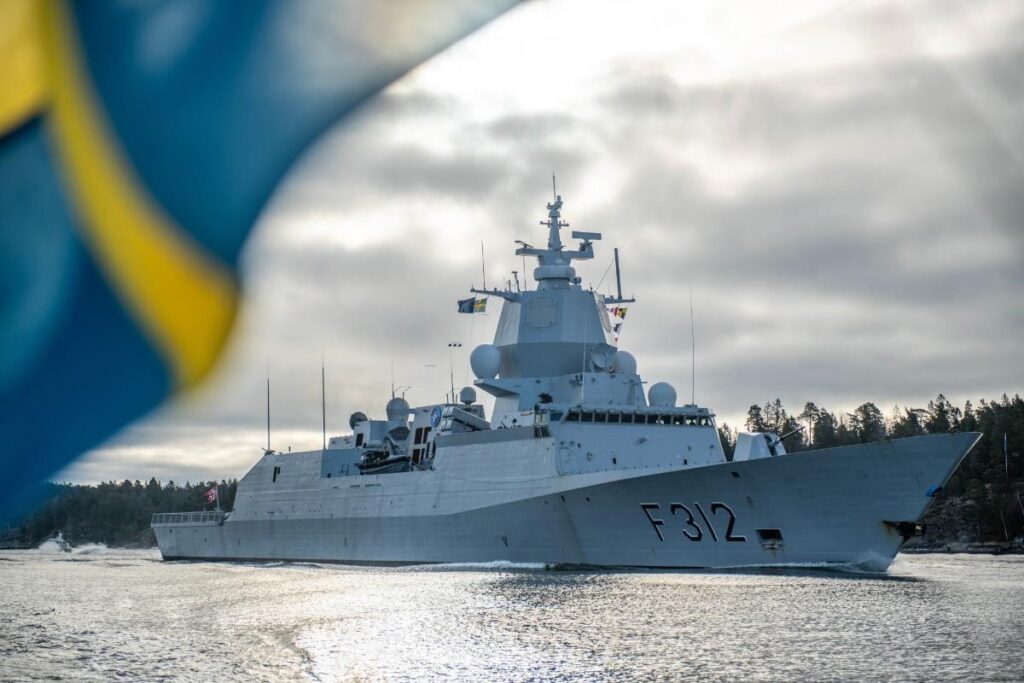Sweden will provide its first military support to a NATO mission when it sends several warships and aircraft to participate in the Baltic Sentry Mission. NATO ALLIED MARITIME COMMAND
After repeated acts of sabotage in the Baltic Sea — a crucial maritime link between the Baltic, central Europe and Scandinavia — NATO announced in January 2025 a multidomain mission intended to deter future acts of sabotage in the region. The Baltic Sentry Mission will deploy warships, Coast Guard vessels, surveillance aircraft and other assets to “deter any future attempts by a state or non-state actor to damage critical undersea infrastructure there,” according to a NATO news release. “Baltic Sentry will deliver focused deterrence throughout the Baltic Sea and counter destabilizing acts like those observed {in December 2024},” said U.S. Army Gen. Christopher G. Cavoli, Supreme Allied Commander Europe, in the release. “It is indicative of the Alliance’s ability to rapidly respond to such destabilization and shows the strength of our unity in the face of any challenge.”
The mission responds to a series of sabotage incidents in the Baltic Sea dating back to 2023 in which undersea cables and pipelines were cut. The incidents, linked to Russia by many Western security agencies, have damaged communications, gas and other key links between Estonia, Finland, Germany, Lithuania and Finland. Ten cables have been damaged since 2023, according to The Associated Press (AP). The most recent incident in December 2024 involved four cables cut between Estonia and Finland, severely impacting both countries’ energy supply. A ship believed to be part of Russia’s “shadow fleet” was immediately detained by Finland. Within weeks, NATO convened a Baltic Sea NATO Allies Summit in Helsinki, hosted by Finland President Alexander Stubb and Estonia Prime Minister Kristen Michal. At the meeting, NATO Secretary-General Mark Rutte said the mission, which has no end date, will send a clear message to would-be saboteurs. “Under the authority of NATO’s Supreme Allied Commander, General Chris Cavoli, this military activity is part of our ongoing effort to enhance maritime presence and monitoring of key areas for our alliance. It will involve a range of assets, including frigates and maritime patrol aircraft, among others, and will enhance our vigilance in the Baltic,” Rutte said, according to USNI News, a U.S. Naval Institute website.
Denmark, Germany, Latvia, Lithuania, Poland and Sweden also attended the summit, which concluded with an agreement to use naval drones to provide enhanced surveillance and deterrence, USNI reported. “We are deeply concerned by actions, be they negligent or malicious, which cause damage to or threaten the functioning of critical undersea infrastructure. We strongly condemn acts of sabotage to critical undersea infrastructure,” according to a joint statement.
Sweden also announced its first deployment of military assets as part of NATO, which it joined in 2024, contributing as many as three warships and an ASC 890 surveillance aircraft. The country’s Coast Guard will contribute four ships to help monitor the Baltic, with seven additional vessels on standby, according to the AP. Swedish Prime Minister Ulf Kristersson told reporters that although his country is not at war, it is not at peace either, the AP reported.

